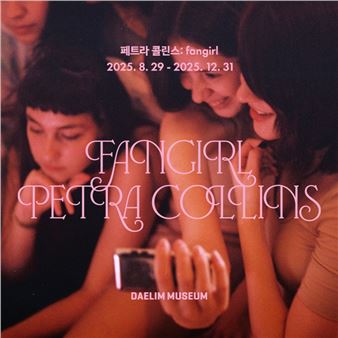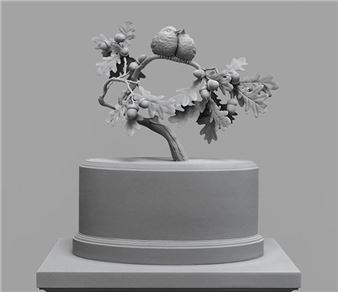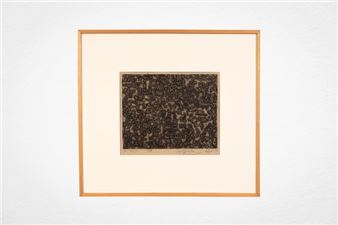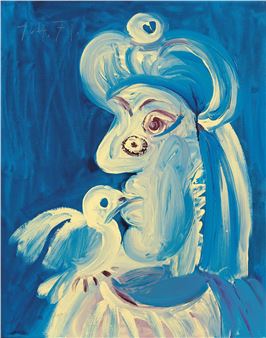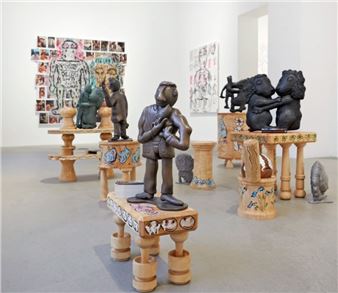The Bernadottes in Black and White
Photos, Graphic art and Drawings The emphasis of the exhibition is on photography. The National Portrait Collection includes photographs of Bernadottes from the mid-19th century onward. These not only show what members of the Swedish royal family looked like; they also show how the art of portrait photography has evolved over the past 150 years. Alongside the photographs, Nationalmuseum presents a selection of graphic art and drawings, and pieces of applied art featuring royal portraits.
History of Photography The evolution of photography from the 1840s to the present day can be traced through portraits of Swedish royalty. When calling cards became popular in the mid-19th century, Karl XV was not slow to allow images of himself to be distributed for propaganda purposes. The featured artists from that era include Mathias Hansen and Bertha Valerius, who were practising at the time when portrait photography was becoming established as an art form and means of expression. Since photography was an international medium whose practitioners moved freely across borders, works by the Parisian photographers Mayer & Pierson and by Ludwig Angerer’s studio in Vienna appear alongside those of Hansen, a Norwegian.
Close-up and innovative The reverential distance shown by the early court photographers disappeared in the mid-20th century, for example in the close-up studies by Lennart Nilsson and Hans Hammarskiöld. Today, few people are pictured as frequently as the present King, Carl XVI Gustaf, and his family. As well as a host of conventional images, the exhibition features innovative compositions by Hans Gedda, Denise Grünstein, Bruno Ehrs and Mikael Jansson. These royal portraits are of interest not only as historical documents but also from an artistic perspective.
The Bernadottes in Black and White offers an opportunity to reflect on the significance of portraiture to the role of monarch, and on how art depicts the pillars of society.

Recommended for you
Photos, Graphic art and Drawings The emphasis of the exhibition is on photography. The National Portrait Collection includes photographs of Bernadottes from the mid-19th century onward. These not only show what members of the Swedish royal family looked like; they also show how the art of portrait photography has evolved over the past 150 years. Alongside the photographs, Nationalmuseum presents a selection of graphic art and drawings, and pieces of applied art featuring royal portraits.
History of Photography The evolution of photography from the 1840s to the present day can be traced through portraits of Swedish royalty. When calling cards became popular in the mid-19th century, Karl XV was not slow to allow images of himself to be distributed for propaganda purposes. The featured artists from that era include Mathias Hansen and Bertha Valerius, who were practising at the time when portrait photography was becoming established as an art form and means of expression. Since photography was an international medium whose practitioners moved freely across borders, works by the Parisian photographers Mayer & Pierson and by Ludwig Angerer’s studio in Vienna appear alongside those of Hansen, a Norwegian.
Close-up and innovative The reverential distance shown by the early court photographers disappeared in the mid-20th century, for example in the close-up studies by Lennart Nilsson and Hans Hammarskiöld. Today, few people are pictured as frequently as the present King, Carl XVI Gustaf, and his family. As well as a host of conventional images, the exhibition features innovative compositions by Hans Gedda, Denise Grünstein, Bruno Ehrs and Mikael Jansson. These royal portraits are of interest not only as historical documents but also from an artistic perspective.
The Bernadottes in Black and White offers an opportunity to reflect on the significance of portraiture to the role of monarch, and on how art depicts the pillars of society.

 ARTISTS
ARTISTS









